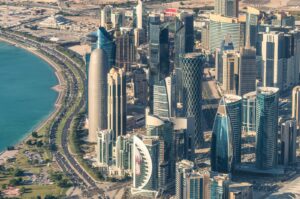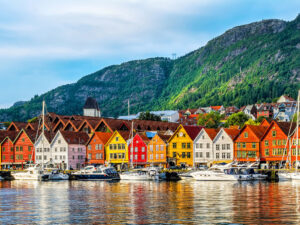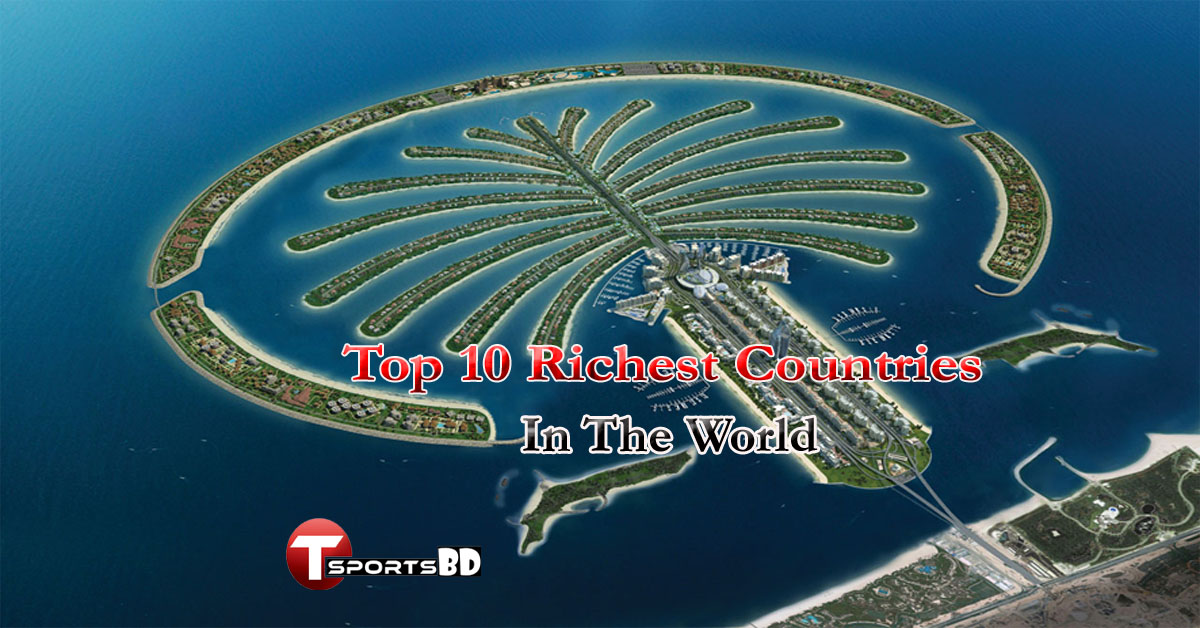Top 10 Richest Countries In The World In 2024
Top 10 Richest Countries in the World in 2024. The richest countries in the world in 2024mark ideal locations to live. Raise a family, and retire, but also denote locales where the price of living is extremely high. In our survey of the top 10 richest countries in the world, we found many European countries at the top, but our readers might be surprised by the appearance of unexpected countries from across the world. Our criteria for the richest countries in the world are based on per capita GDP. In other words, we divided the total estimated GDP for each country by the number of its citizens to assess the relative prosperity of the country on a per-person basis. And now, without further ado, here are the Richest countries in the world in 2024.
Top 10 Richest Countries in the World List
1. Luxembourg
This small European nation is known for its royal castle, delicious food and being the last Grand Duchy in the world. But the country makes more for its size with its strong economy. Luxembourg is the third richest country in the world. The country’s per capita GDP posted $ 109,199, an increase of 3.9 percent over the previous year. Its diverse natural resources are seen as the main driver of economic growth in Luxembourg, with steel, industry and banking as its main revenue generators. It is also attracting banks from all over the world due to its low taxes, as evidenced by the fact that there are more than 150 banks in the country. Conservative economic policies have contributed to the country’s economic growth with innovations and economies known for their negligible inflation rates.
- Population: 629,191
- GDP per capita (PPP): $120,962.2

2. Singapore
With a population of 5.612 million, this cosmopolitan city-state is known as the richest nation in Asia. And so far, fourth in the world with a GDP of, 98,255 per capita, an increase of 4.4 percent since 2017. Despite its small size, lack of natural resources and agricultural land. It has been able to accumulate resources that other countries only dream of. Today, Singapore’s economy continues to grow, driven mainly by foreign investment and trade. The largest economic sectors are banking, shipbuilding and electronics.
Dubbed as the most expensive country in the world, Singapore only maintained its reputation as it expanded 3.9 percent in the second quarter of 2018 alone. Much of this has been attributed to the country’s liberal economic policies and multicultural economy. Although the financial services sector remains the backbone of the country’s economy. Its services and manufacturing industries have consistently contributed to its economic position.
- Population: 5,866,407
- GDP per capita (PPP): $101,936.7

3. Qatar
Oil-rich Qatar ranks first among our top 10 richest countries in the world. Its strong economy, surpassing the rest of the world. It is driven by its well-established petroleum sector, which accounts for about 85 percent of its exports and 70 percent of its total national revenue. With a population of just 2.639 million, Qatar enjoys the economic benefits of a small country rich in huge oil reserves. The country has, in recent years, enjoyed surplus revenue from the oil sector. In addition, the tourism trade is contributing to the national treasury with its steel and fertilizer exports. But Qatar’s economy is far from perfect, relying on expatriate labor to keep its economic engine running. The government does not impose any taxes on Qataris so that they can fully enjoy their earnings, along with the national health insurance that the government sponsors.
- Population: 2,899,617
- GDP per capita (PPP): $93,851.7

4. Ireland
A country known for its great writers and its beautiful tourist spots, Ireland has become one of the richest countries in the world. It has one of the highest living standards in the world for a strong economy, primarily driven by trade and investment. Ireland’s per capita GDP grew 6.1 percent, reaching $ 77,670. Despite peaking in 2008, Ireland’s economic growth has been the envy of other countries. The influx of foreign investors, such as Microsoft, Google and Apple, has turned the country into an exporter of medical, electrical and computer equipment. Its pharmaceutical and chemical industries as well as natural resources such as fisheries, minerals and timber are also contributing to its economic growth.
- Population: 4,953,494
- GDP per capita (PPP): $87,212.0

5. Switzerland
Most famous for its neutrality during World War II, Switzerland is at number four on our list. Its people, located between France, Germany and Italy, generally speak at least three languages, often knowing four to five languages as the basis for higher education. A special cross in Swiss German and French. Known as Schwitzerdeutsch, is also spoken by many rural workers in Switzerland. If its notion of neutrality gives any indication, Switzerland is always a very independent country full of very independent people. Although it is part of the European Free Trade Association, Switzerland has notoriously rejected EU membership, preferring independence over groupthink. In 2024, Switzerland’s GDP is estimated at $83,400 USD.
- Population: 8,675,923
- GDP per capita (PPP): $70,276.6

6. United Arab Emirates
Another Middle Eastern country that relies heavily on petroleum revenues. The United Arab Emirates (UAE) also benefits from revenues from its telecommunications and services sector. Despite being one of the richest countries in the world, it does not depend on its reputation. It continues to diversify its sources of income, betting on industries with high-yield potential. The move has greatly benefited the national economy, with the tourism trade helping the economy through the 2007-2009 global financial crisis. Sustainable economic policy has actually sustained the UAE, resulting in a 2.4 percent increase in GDP per capita, which now stands at $70,262.
- Population: 9,926,221
- GDP per capita (PPP): $69,957.6

7. Norway
Norway, a prominent country in Scandinavia, offers both beauty and charm, not to mention a prosperous economy. Indeed, its per capita GDP expanded 3.1 percent in 2018, reaching a staggering $ 74,318. Industrialization has contributed immensely to the economic growth of the country, and activities such as exploration of natural resources and petroleum and fishing have contributed immensely to the economy. Known for its impeccable standard of living, Norway’s monetary policy is of an independent nature, which is clearly working to its advantage due to its high productivity, state-sponsored healthcare and negligible unemployment rate. With an October 2021 GDP per capita of $82,240 US$. This country is not only one of the top five richest worldwide.
- Population: 5,435,878
- GDP per capita (PPP): $67,978.7

8. United States (US)
With resource-rich land and the world’s largest economy, the United States has a strong purchasing power. It supplies its energy and can export its oil and gas for profit. The size of its economy and the high rate of real GDP growth are unmatched by any other country. As a relatively uncontrolled market economy with a decentralized political system, there are virtually no state-owned enterprises and the legal system protects investors’ liability. While such statistics attract talented people around the world to take a shot at earning a fortune.
America has an entrepreneurial mindset that is encouraged from an early age and is supported by university programs and research institutions. Nevertheless, government debt is currently 27,000 billion, $ 3,000 billion more than the pre-COVID-19. Counted and about 3.5 million travelers a year, more than half of the country’s GDP is owed to tourism.
- Population: 331,643,466
- GDP per capita (PPP): $65,279.5

9. Brunei
This small Southeast Asian country has a population of only 400,000. But its size will not let you fool. In recent years, Brunei Darussalam has consistently been ranked among the top 10 richest countries in the world. This year, the country has retained No. GDP per capita is $81,612 with 5 spots, up 3.1 percent from 2017 This powerful Southeast Asian economy is heavily dependent on its oil and natural gas production, which supports more than half of its GDP. It is further strengthened by income from foreign investment and local production. Brunei, however, has begun to diversify its economy by investing in other sectors. A strong economy is reflected in government food. And housing subsidies and the provision of free health care to its people.
- Population: 438,788
- GDP per capita (PPP): $64,724.1

10. San Marino
San Marino’s stable and prosperous economy is partly indebted to its affluent citizens. Who have been able to successfully adapt and use their available resources. Traditionally, San Marino was a land of peasants and stone-throwers, who produced cheese and agricultural products. With unique trinkets made of stone. Today its hardworking citizens contribute to the economy by producing ceramics, tiles, building materials, furniture, clothing, textiles, paints, quality spirits and wine for export. Fruit exports are also a factor in the country’s recent economic growth.
Surrounded entirely by Italy, San Marino still maintains a close relationship with the former European country. Including the payment made by the Italian government for exclusive ownership of tobacco and other products in this southern European microstate. Its financial and tax system. Although the cost of living in San Marino is comparable to that of Italy. The equitable distribution of wealth in this socialist society has led to some of the lowest poverty rates in the world. After all, its local population is small and about 3.5 million travelers a year. Owed to tourism more than half of the country’s GDP.
- Population: 33,931
- GDP per capita (PPP): $61,006.8

Last Word
Thanks For Staying With us. Here we are provide Top 10 Richest Countries in the World in 2024. To get More Information Please Visit TSportsBD.Com .







